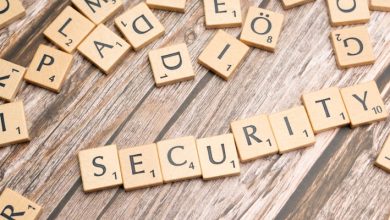How to Create a Secure Backup for Your Crypto Wallet

- Understanding the importance of backing up your crypto wallet
- Choosing the right storage method for your backup
- Step-by-step guide to creating a secure backup for your crypto wallet
- Best practices for storing and securing your backup
- Ensuring redundancy in your backup strategy
- Recovering your wallet using the backup in case of emergencies
Understanding the importance of backing up your crypto wallet
Backing up your crypto wallet is crucial in ensuring the security and accessibility of your digital assets. By creating a secure backup, you can protect your funds from potential loss due to hardware failure, theft, or other unforeseen circumstances. Without a backup, you risk losing access to your funds permanently, which can be devastating.
When it comes to backing up your crypto wallet, there are several options available to you. You can choose to store your backup on a USB drive, external hard drive, paper wallet, or even in the cloud. It is essential to select a method that is secure and convenient for you to access in case of an emergency.
One of the most common mistakes that crypto wallet owners make is failing to create a backup of their wallet. This oversight can result in the loss of all funds stored in the wallet, with no way to recover them. By taking the time to create a secure backup, you can ensure that your assets are safe and easily recoverable in the event of a disaster.
In conclusion, backing up your crypto wallet is a simple yet critical step in protecting your digital assets. By creating a secure backup, you can have peace of mind knowing that your funds are safe and accessible at all times. Don’t wait until it’s too late – take the time to back up your wallet today.
Choosing the right storage method for your backup
When it comes to creating a secure backup for your crypto wallet, choosing the right storage method is crucial. There are several options available, each with its own pros and cons. One popular method is using a hardware wallet, which is a physical device that stores your private keys offline. This provides an extra layer of security compared to storing your keys online. Another option is to use a paper wallet, which involves printing out your private keys and storing them in a safe place. While this method is secure, it can be vulnerable to physical damage or loss.
Alternatively, you can also choose to store your backup in the cloud. This involves uploading your encrypted wallet file to a secure cloud storage service. While this method is convenient and accessible from anywhere, it can be susceptible to hacking or data breaches. Additionally, you can opt for storing your backup on a USB drive or external hard drive. This provides a good balance between security and accessibility, as long as you keep the device in a safe place and protect it from physical damage or theft.
Ultimately, the best storage method for your backup will depend on your individual needs and preferences. It’s important to weigh the pros and cons of each option and choose one that offers the right balance of security and convenience for you. Whichever method you choose, make sure to regularly update your backup and test its integrity to ensure that your crypto wallet is always protected.
Step-by-step guide to creating a secure backup for your crypto wallet
Creating a secure backup for your crypto wallet is crucial to ensure that your digital assets are protected in case of unexpected events. Follow these steps to set up a reliable backup system:
- Start by accessing your crypto wallet and locating the backup options in the settings menu.
- Choose a secure storage method for your backup, such as an external hard drive, USB drive, or encrypted cloud storage.
- Follow the instructions provided by your wallet provider to generate a backup file or seed phrase. This information is essential for recovering your wallet in case of loss or theft.
- Encrypt your backup file or seed phrase with a strong password to add an extra layer of security.
- Store your backup in multiple secure locations to reduce the risk of loss. Consider keeping a copy in a safe deposit box or with a trusted individual.
- Regularly update your backup to include any new transactions or changes to your wallet configuration.
- Test your backup recovery process to ensure that you can successfully restore your wallet if needed.
By following these steps, you can create a secure backup for your crypto wallet and have peace of mind knowing that your digital assets are safe and accessible at all times.
Best practices for storing and securing your backup
When it comes to storing and securing your backup for your crypto wallet, there are several best practices you should follow to ensure the safety of your assets. Here are some tips to help you keep your backup secure:
- Encrypt your backup files using a strong password to prevent unauthorized access.
- Store your backup in multiple secure locations such as a safe deposit box, a secure cloud storage service, or a hardware wallet.
- Regularly update your backup to include any new transactions or changes to your wallet.
- Consider using a multi-signature wallet that requires multiple signatures to authorize transactions, adding an extra layer of security.
- Avoid storing your backup on unsecured devices or sharing it with anyone else to minimize the risk of theft or hacking.
By following these best practices, you can help protect your crypto assets and ensure that you always have access to your funds, even in the event of a security breach or loss of your primary wallet.
Ensuring redundancy in your backup strategy
When creating a secure backup for your crypto wallet, it is crucial to ensure redundancy in your backup strategy. This means having multiple copies of your backup stored in different locations to protect against data loss. Redundancy is essential because it provides an added layer of security in case one backup fails or becomes compromised.
One way to ensure redundancy in your backup strategy is to use a combination of online and offline storage options. Online storage, such as cloud services, provides convenience and accessibility, while offline storage, like external hard drives or USB drives, offers increased security against cyber-attacks.
Another important aspect of ensuring redundancy is regularly updating your backups. By creating multiple backups at different points in time, you can protect against any potential issues that may arise with your crypto wallet. This practice also allows you to recover your data from a specific point in time if needed.
Overall, redundancy in your backup strategy is vital for safeguarding your crypto wallet against unforeseen circumstances. By implementing a combination of online and offline storage options and regularly updating your backups, you can create a secure and reliable backup solution for your valuable cryptocurrency assets.
Recovering your wallet using the backup in case of emergencies
It is crucial to have a backup of your crypto wallet in case of emergencies such as losing your device or forgetting your password. To recover your wallet using the backup, follow these steps:
- Locate the backup file you created previously.
- Install a compatible crypto wallet software on a new device.
- Open the software and select the option to import a wallet using a backup file.
- Choose the backup file from your storage and enter the required credentials.
- Once the import process is complete, you should have access to your wallet with all your funds intact.
By following these steps, you can rest assured that your crypto assets are safe and accessible even in unexpected situations. Remember to keep your backup file in a secure location and update it regularly to ensure you can recover your wallet whenever needed.



